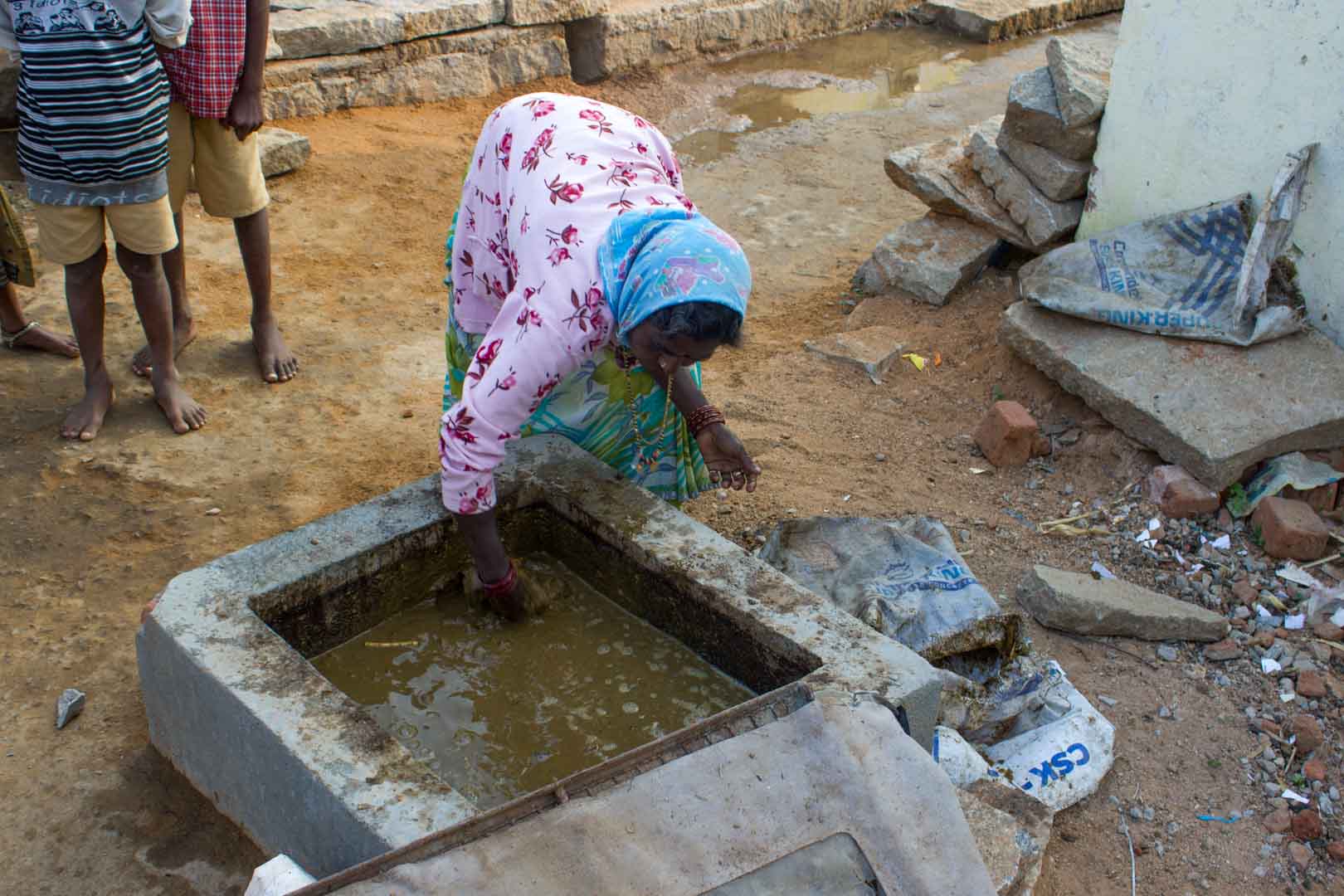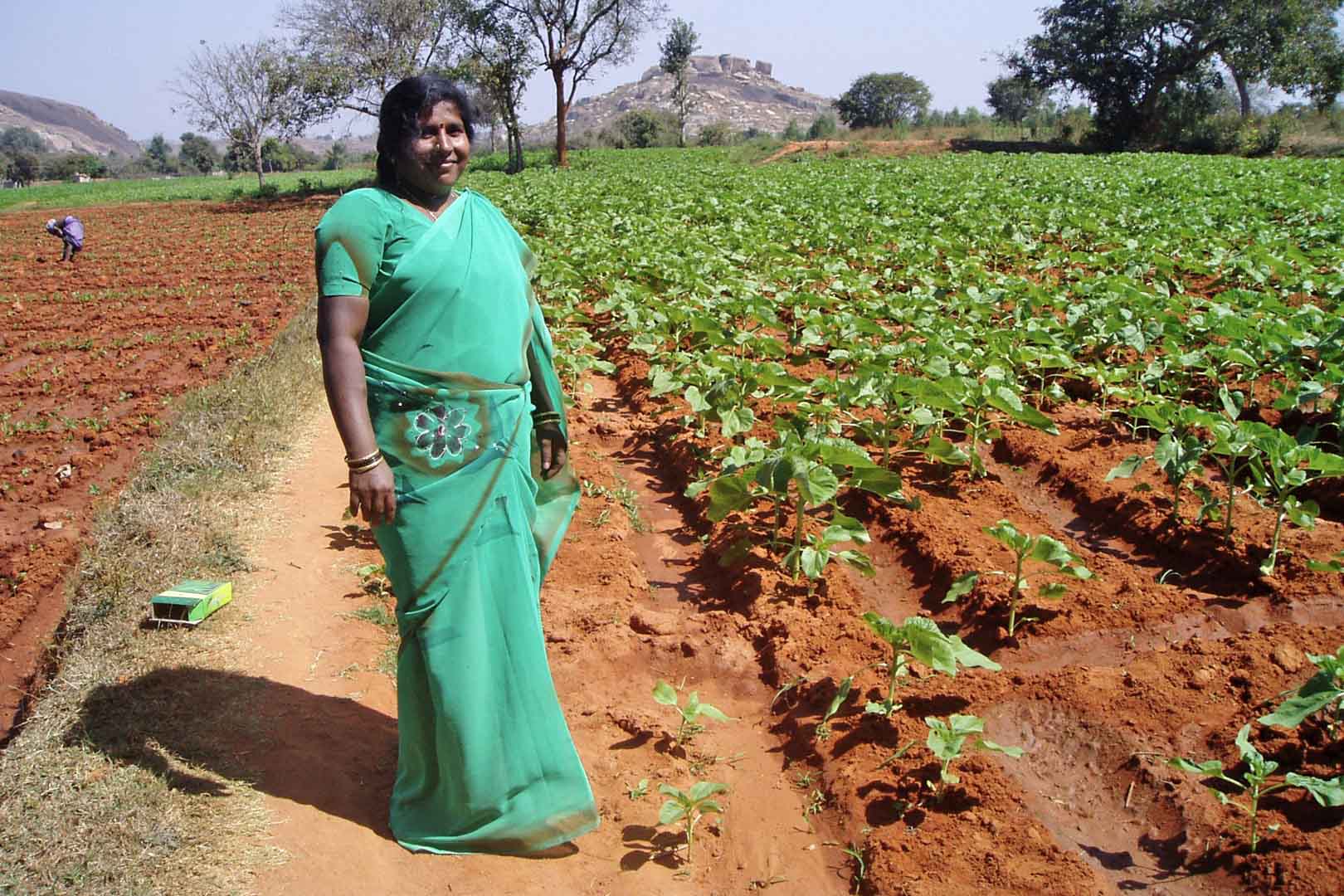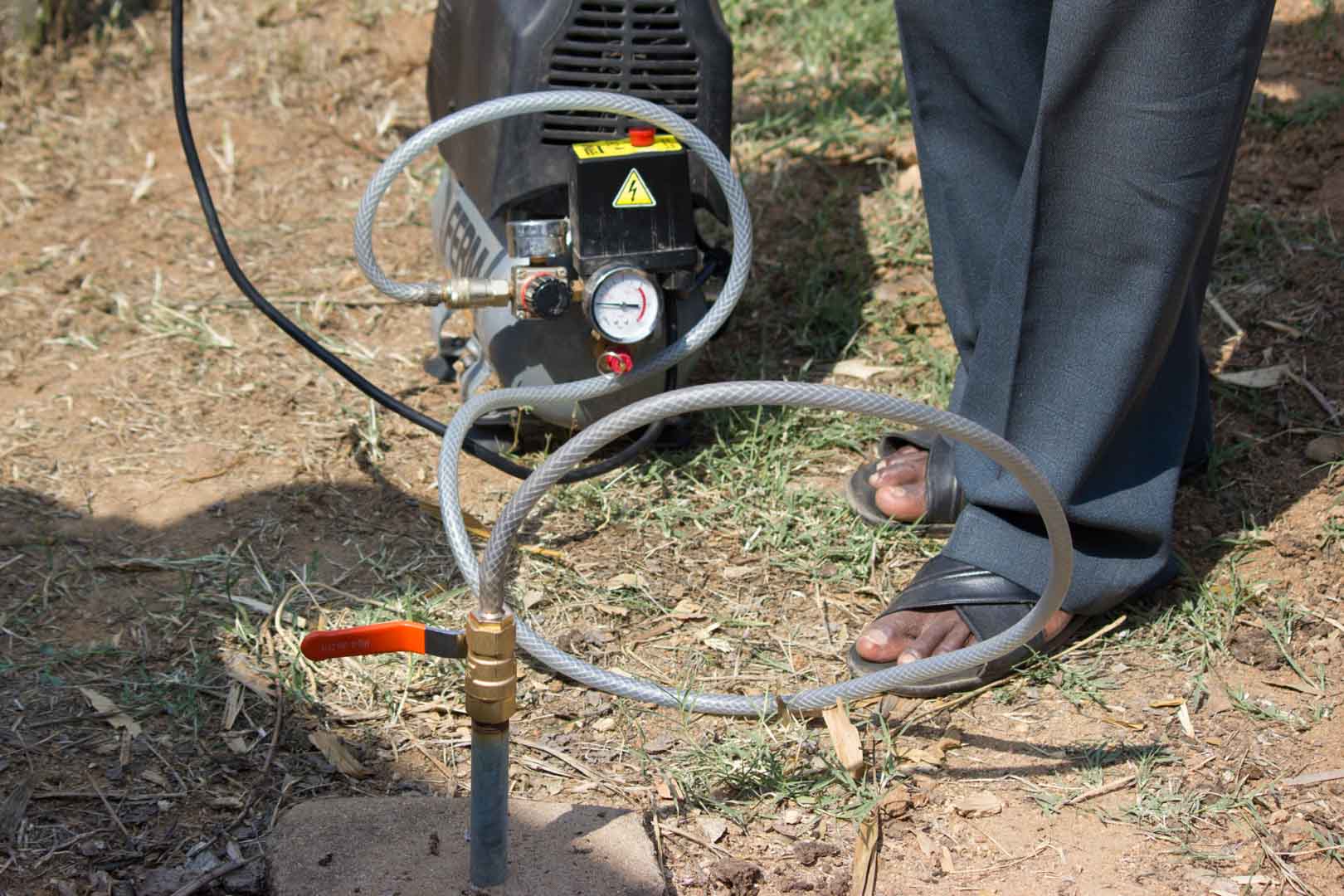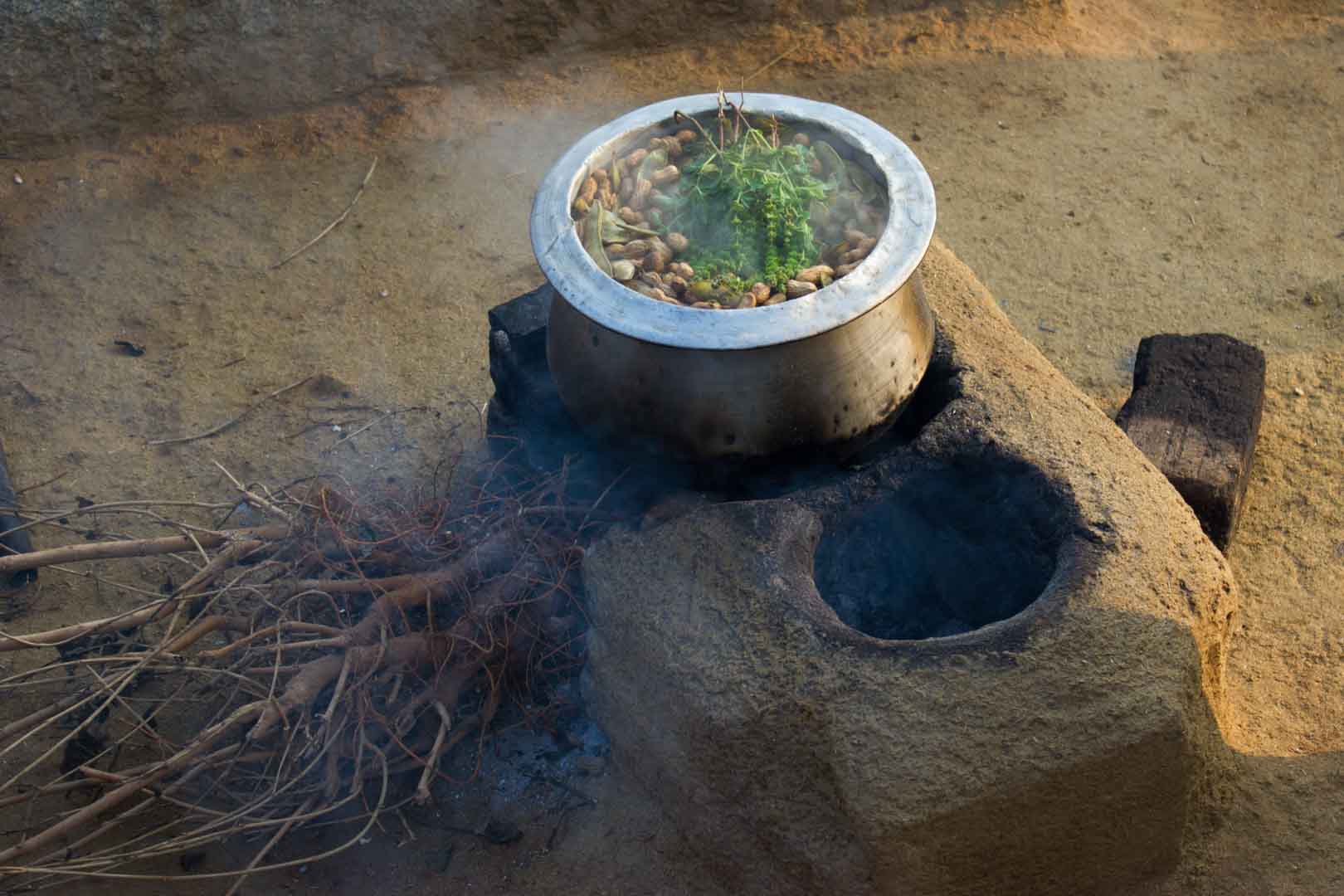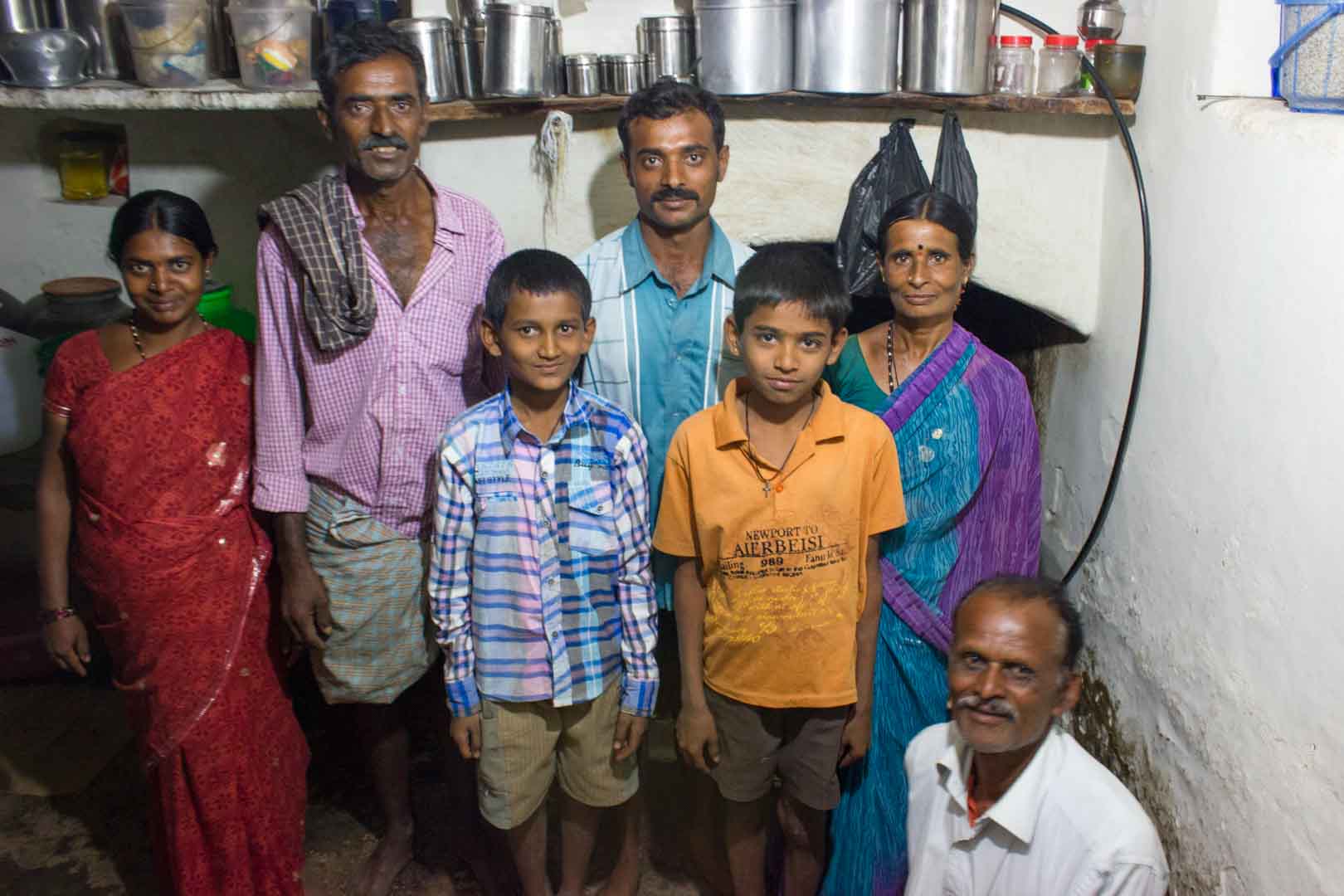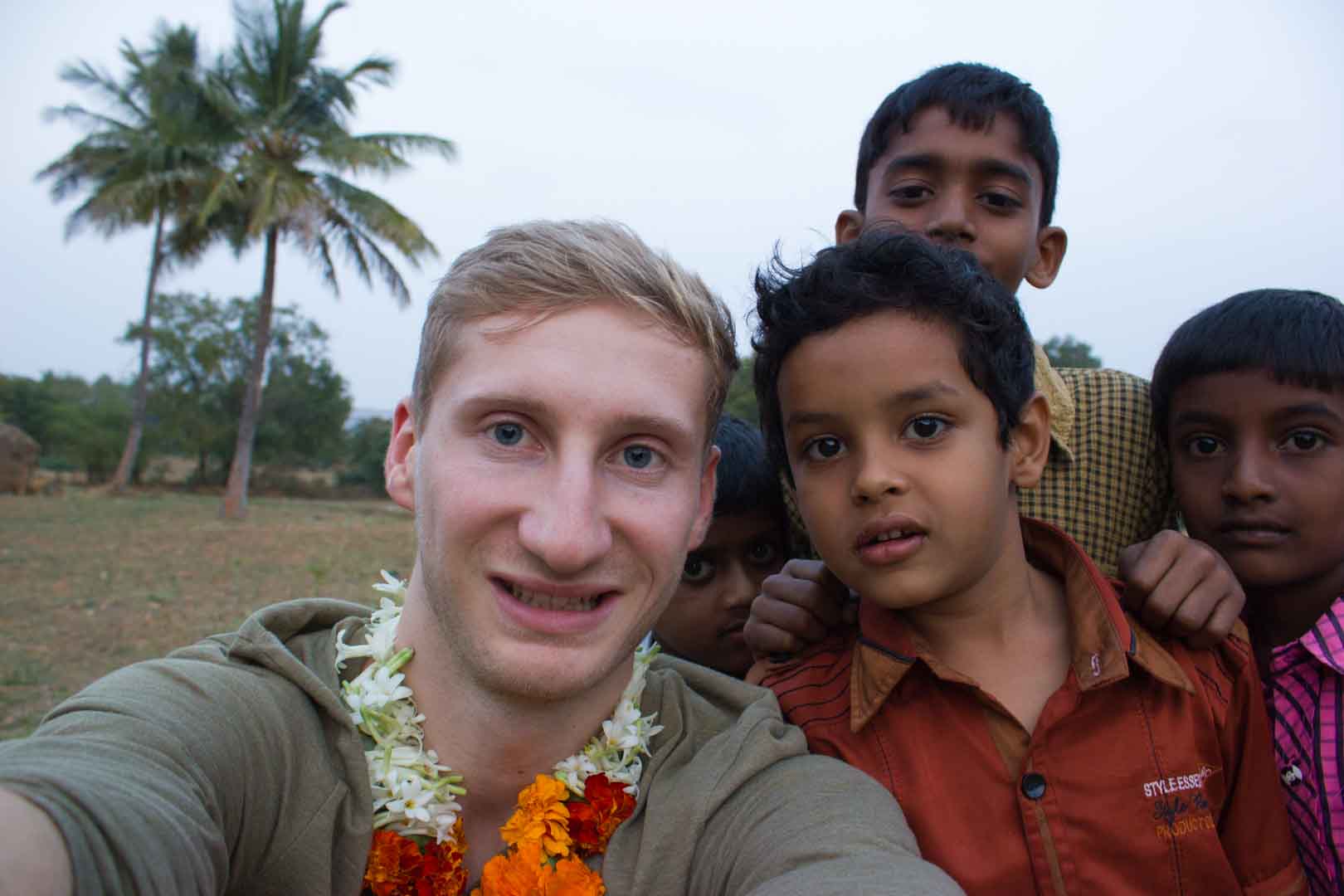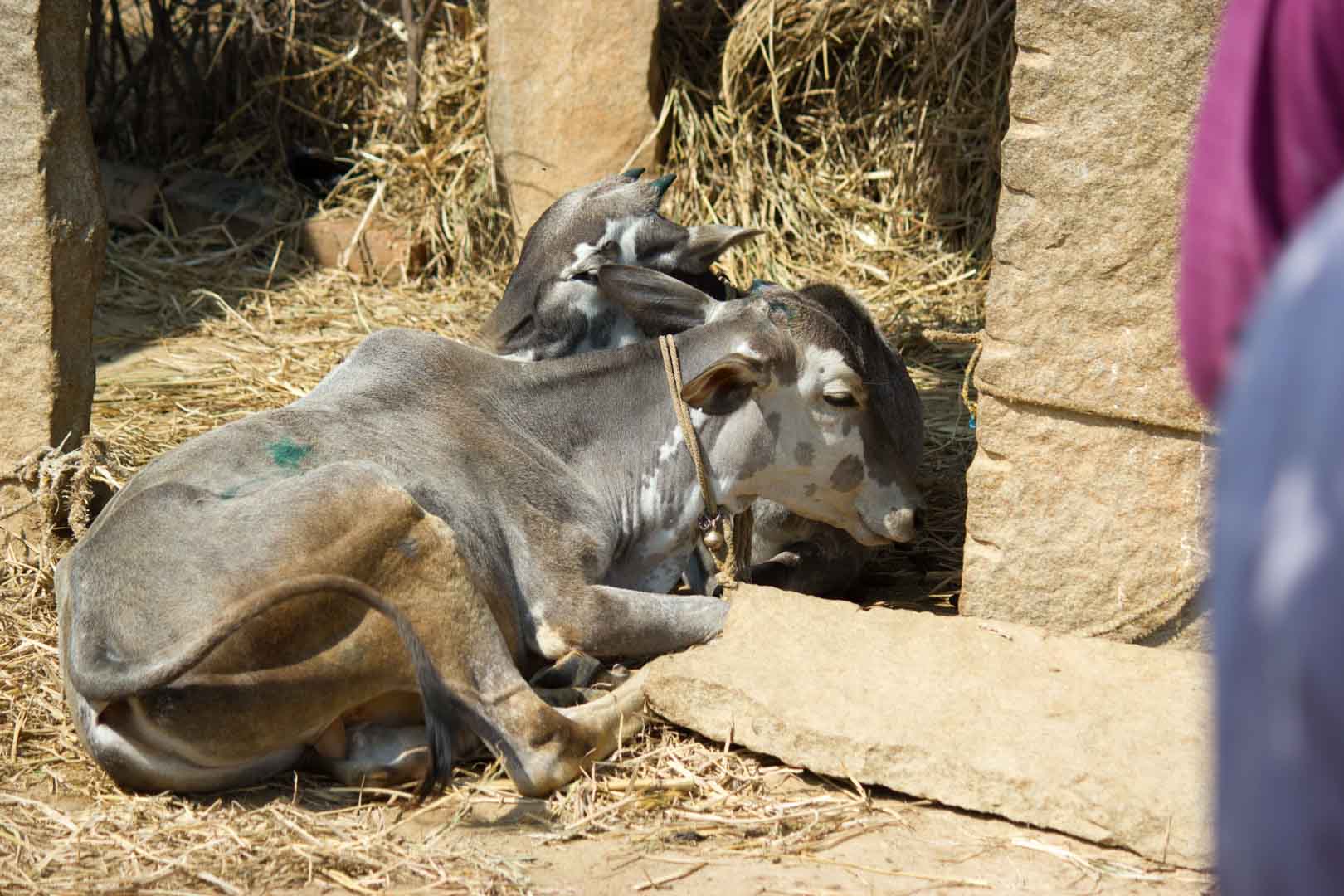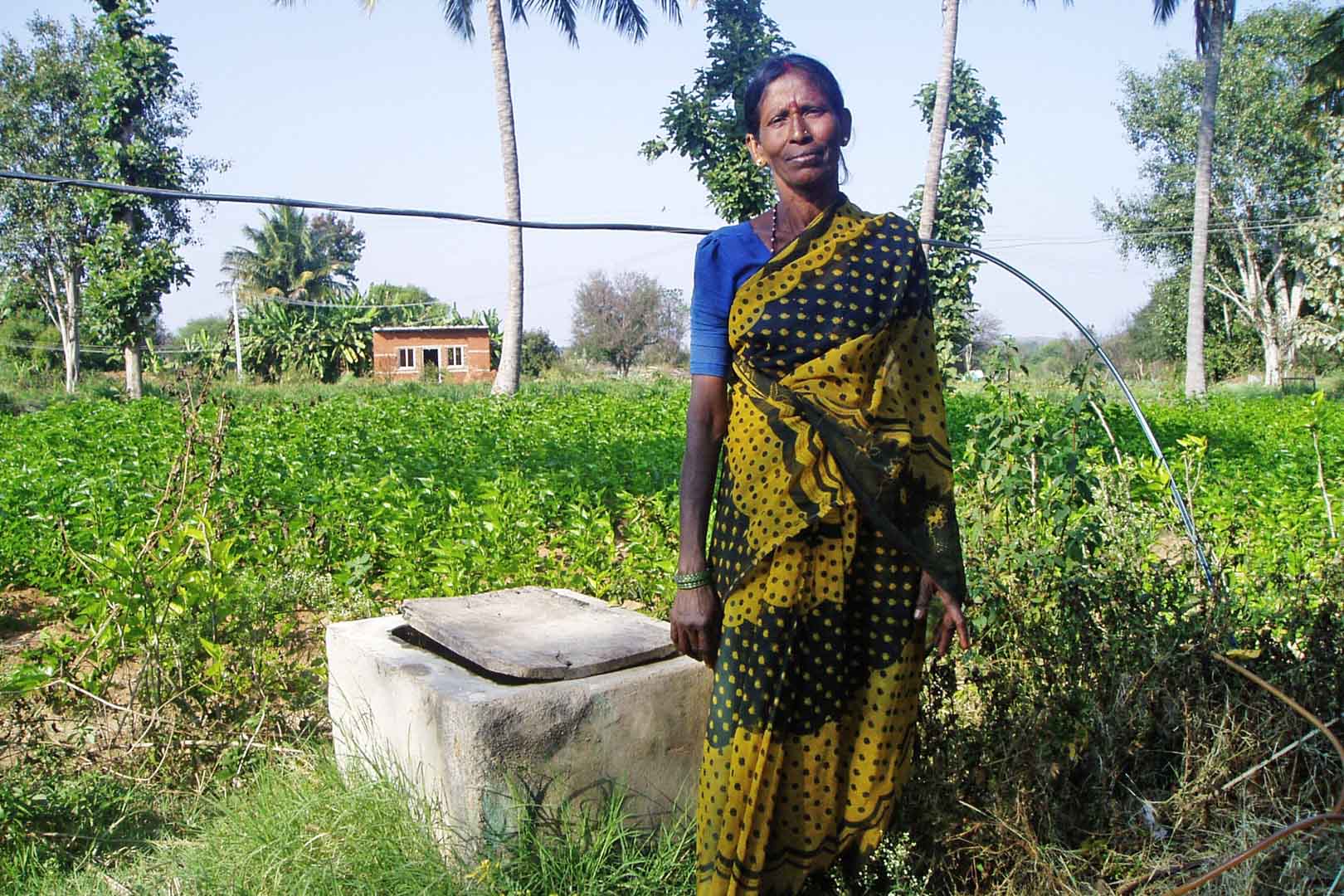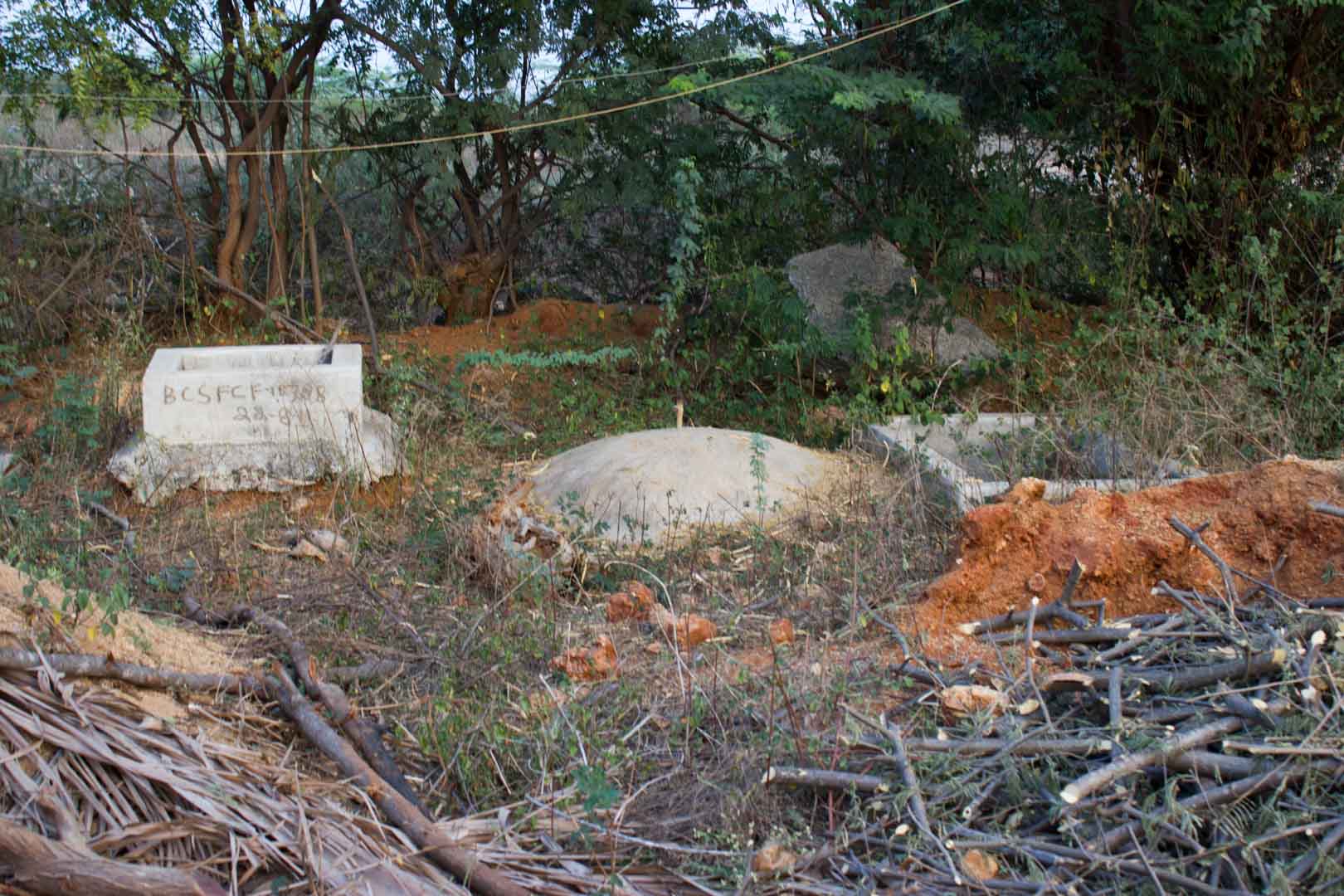Cooking with gas from cow dung
In many rural households in India, cooking is done over simple open fireplaces in the home. This requires a lot of wood and causes toxic smoke. Respiratory and eye infections are very common, especially among women and children.
This project promotes small biogas plants for private households. They produce biogas from cow dung and certain organic household waste. This allows families to cook without any worries. There is no smoke any more, and the tedious chore of collecting wood is also dispensed with. Many women and children were busy collecting firewood one day a week; now they have more time to work and play. On top of that, because they are saving the forests and reducing carbon emissions by not burning any more wood, the project can finance itself through climate protection. The families have to get involved themselves when the system is installed. Eighteen thousand such plants have already been built, each with a capacity of 2 cubic meters.

In biogas facilities, biomass is fermented into biogas in sealed digesters. Biomass may consist of organic waste or dung from cows or other animals. In countries like India or Vietnam, families use the gas from small biogas plants for cooking. This reduces CO2 emissions that would be produced by cooking with wood or charcoal. Biogas plants also prevent methane from escaping into the atmosphere, as is the case when organic waste is stored in an open pit. Instead, the gas is fed from the closed digesters to specific cookers and thus provides an independent and renewable source of energy.
Explore our projects
Biochar for Climate Action, Healthy Soils, and Better Harvests

A certified climate project combined with additional commitment

Expansion of renewable energy generation in Asia

Ceramic water filters save CO2 and improve health

Improved cookstoves worldwide – for better health and cleaner air

A certified climate project combined with additional commitment

Powering access to renewable energy in Africa

A certified climate project combined with additional commitment

Restored ecosystems remove carbon

Turning degraded farmlands into healthy ecosystems

Improved cookstoves - better for health and the environment






